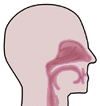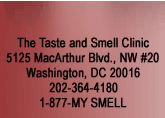  |
||
 |
February 2020Subjective Sensory Function Responses After Successful Treatment of Hyposmia Do Not Mirror Objective ChangesSubjective responses after successful treatment of hyposmia are usually less than measureable changes shown by objective techniques. In many studies of responses to treatment in hyposmic patients we have measured subjective responses of changes in taste, flavor, and smell using a scale of 0-100 with 100 being a total return of sensory function to normal, 0 being no change and numbers in between indicating a partial return. We have compared these results with objective measurements of taste and smell function using patient responses to specific objective measurements of taste and smell detection and recognition to four tastants (salt, sweet, sour, and bitter) and to four odorants (pungent, sweet, oily and banana-like). While objective responses improved two fold in successfully treated patients with responses nearly reaching the normal range, patients commonly subjectively considered improvement in taste, flavor and smell between 10-30%. Why the discrepancy? The answer is unclear but we have shown in repeated studies that patients underestimate their subjective improvement in sensory improvement compared to their objective improvements in sensory function. While the range of subjective responses to treatment varies from 1-100% in successfully treated patients the mean sensory responses varies only from 10-30%. Patients either seem reluctant to correlate their successful responses to treatment as correlated with their objective changes or they consider their successful treatment as less than their sensory sensation was prior to their loss of taste, flavor and smell. However, over time, with successful treatment patients do increase their subjective judgment of treatment success but their responses still lag the improvement measured by objective tests of taste and smell function. For further results see: Henkin RI, Abdelmeguid M. Improved Smell and Taste Dysfunction with Intranasal Theophylline. Am J Otolaryngol Head Neck Surg. 2019;2(9): 1070. |
|